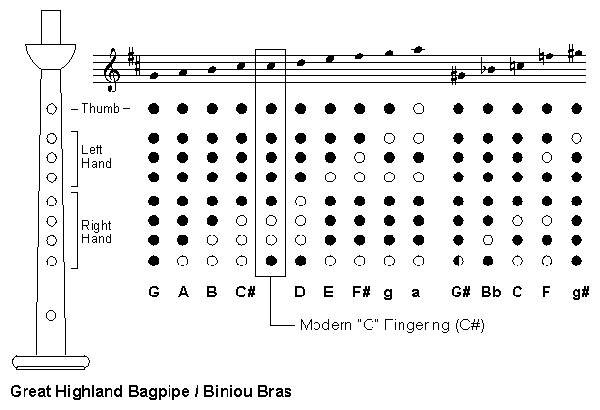How to Go Up and Down Bagpipe Scales

Playing any musical instrument does not seem to be an easy task, as there are a lot of technicalities involved in it. However, things can become a lot easier with practice and you can become popular amongst friends and family members.
If you are a beginner and trying to learn music, you should start off with easier things. Instruments such as guitar will require you to practice hard and do different things simultaneously, which is not easy at all.
Therefore, you should pick something like the bagpipe, which can be controlled easily and even a child can play some easy scales. You can easily go up and down bagpipe scales by learning how to position your fingers.
Instructions
-
1
Hold the bagpipe correctly
First of all, you should know how to hold the bagpipe correctly. If you are a beginner, you will be unaware of the process, so you should first learn the basics before working on going up and down scales. Otherwise, you will be unable to perform the task correctly and people will make fun of you. -
2
Cover the holes with all fingers
The holes of the bagpipe should be covered by fingers of both hands. You should be able to feel the holes under your fingers, so that you can change the scales easily by moving them back and forth. Once you are comfortable with the positioning, you should start playing the bagpipe. -
3
Start with low G
With all holes covered of the basic nine notes, you can play the low G. This is the easiest, as you simply have to keep the fingers on the holes of the bagpipe. -
4
Play low A
By moving your little finger up, you can play the low A. This is also quite easy to master and you will not require much practice for it. -
5
Move the next finger to play B
In order to play B, you need to move the next finger up alongside the little finger. -
6
Drop the little finger
Drop the little finger again and move the next two fingers up. This way, you will be able to play C. -
7
Lift the index finger to play D
Now, lift the index finger in order to play the D note. -
8
Play notes E, F and G
Using the left hand, you can play the E, F and G notes. Simply remove the fingers of your left hands one by one to play these notes. -
9
Play high A
Finally, you can play the high A note by putting finger over E and leaving the other holes open.







